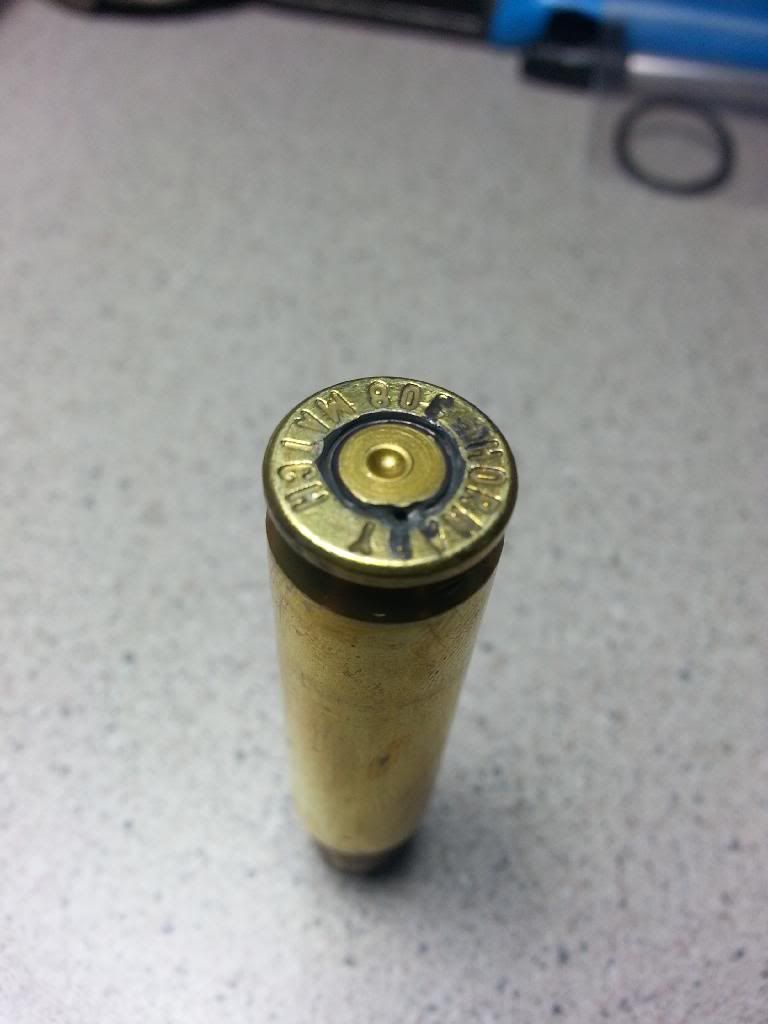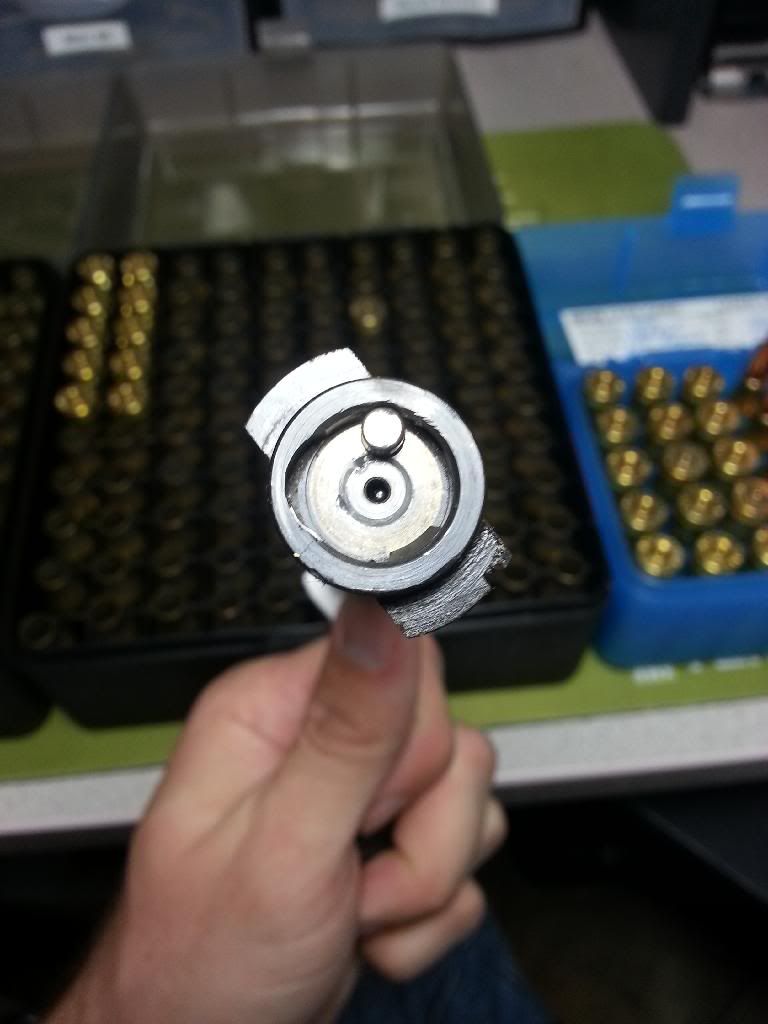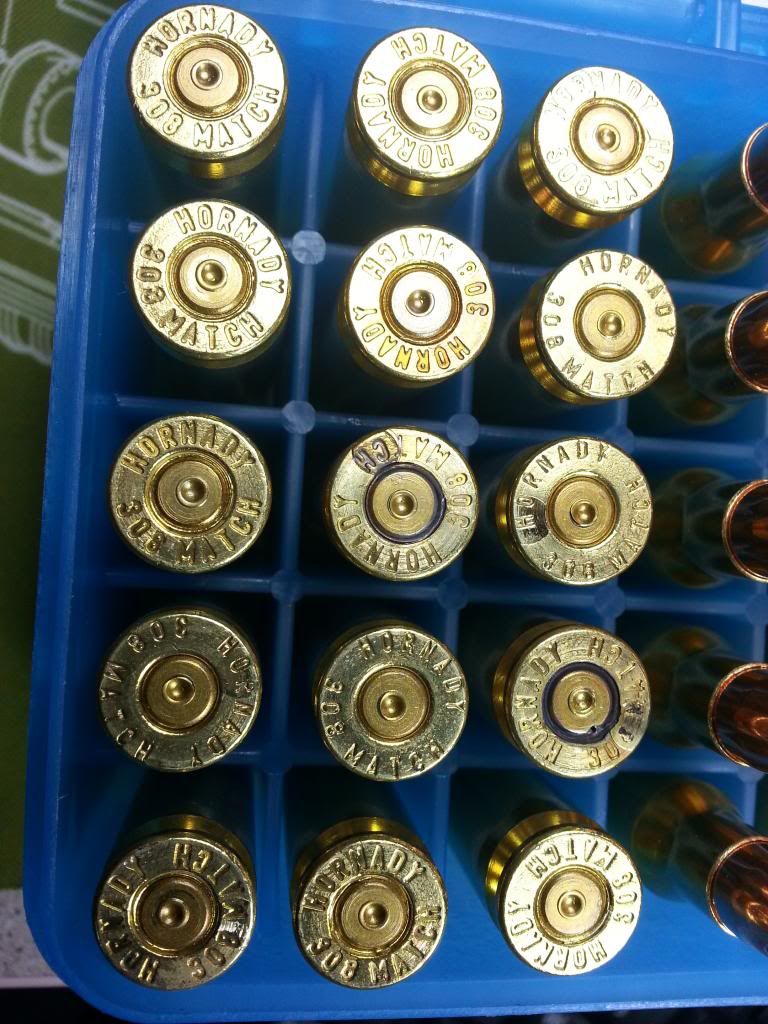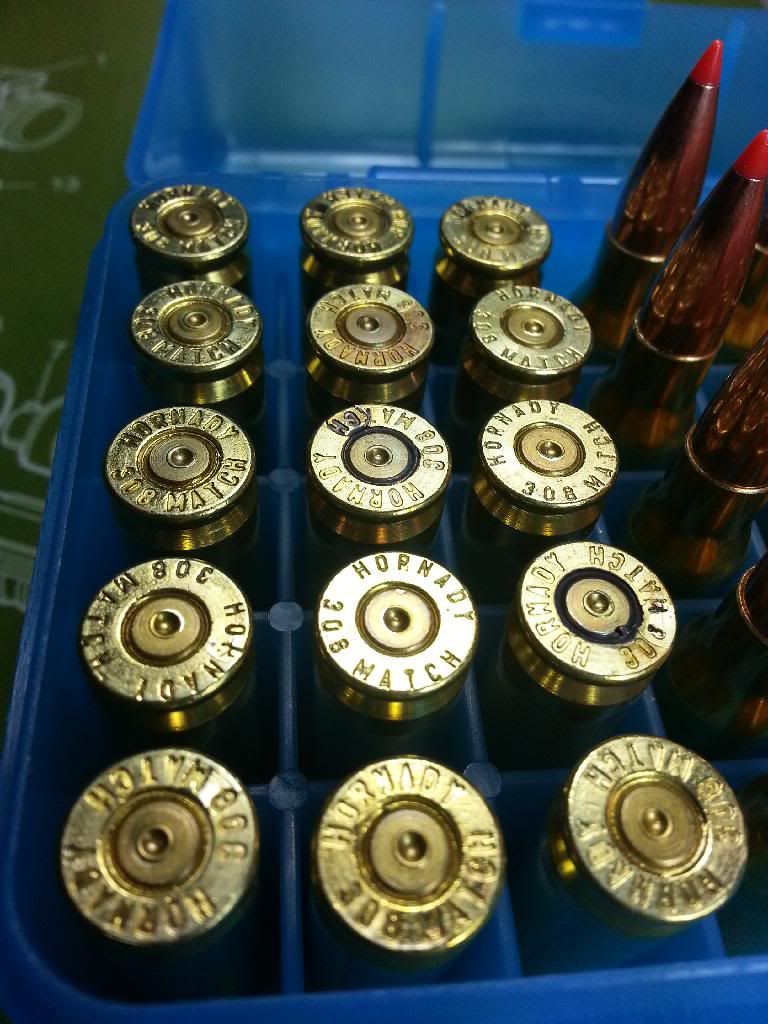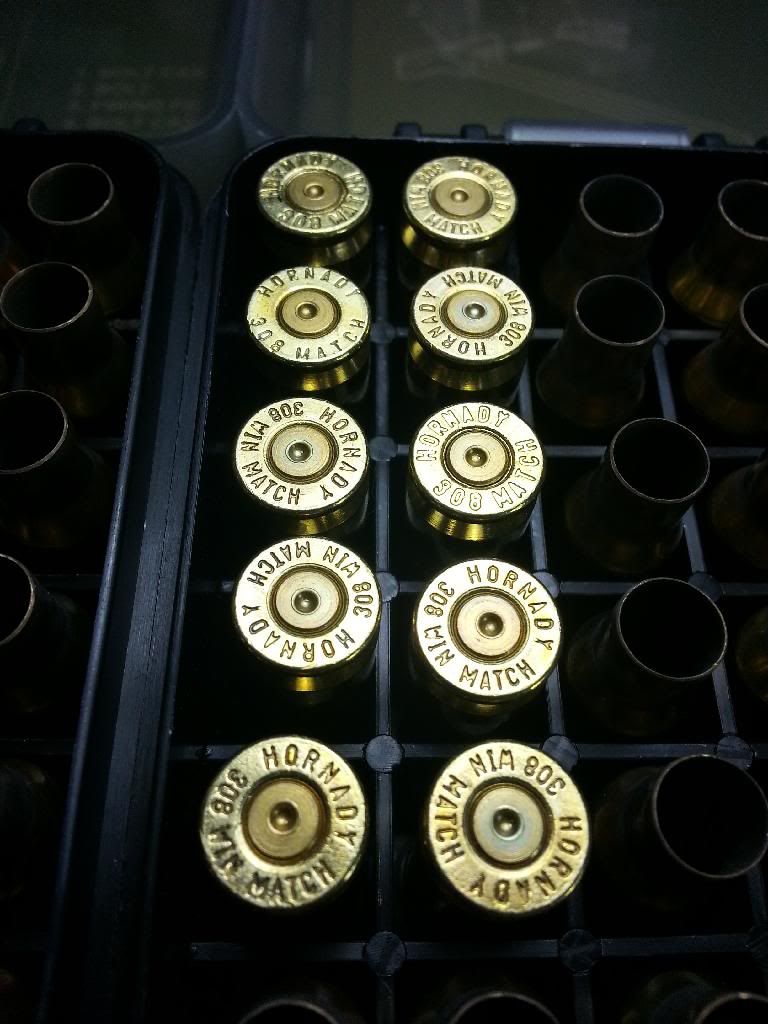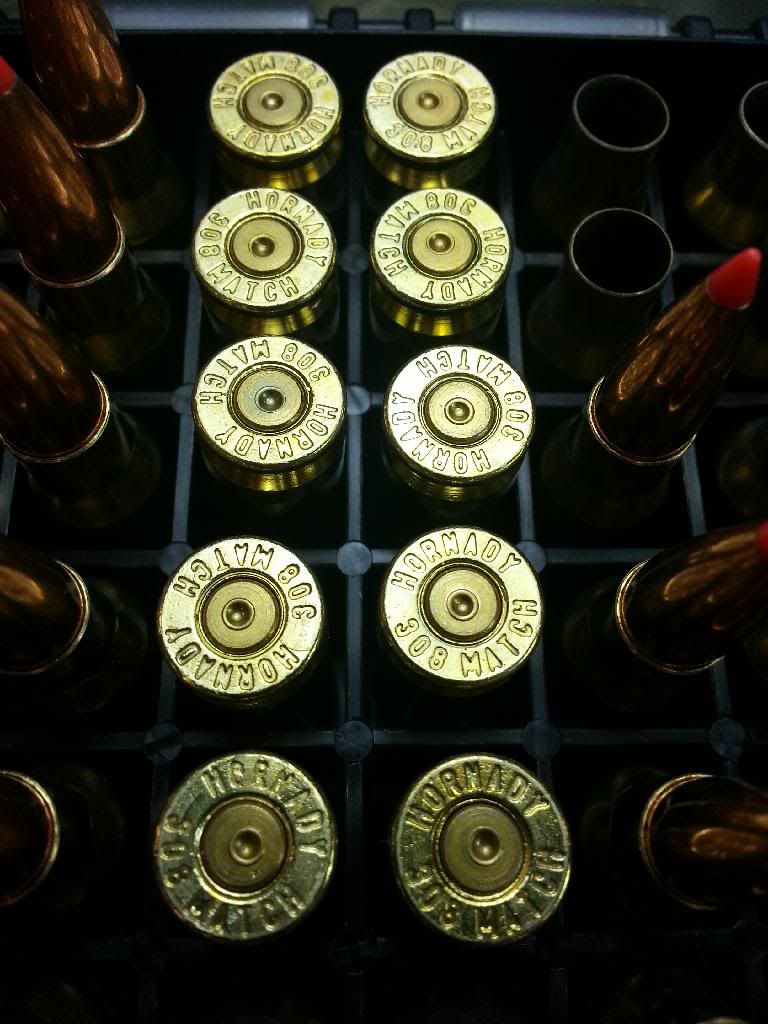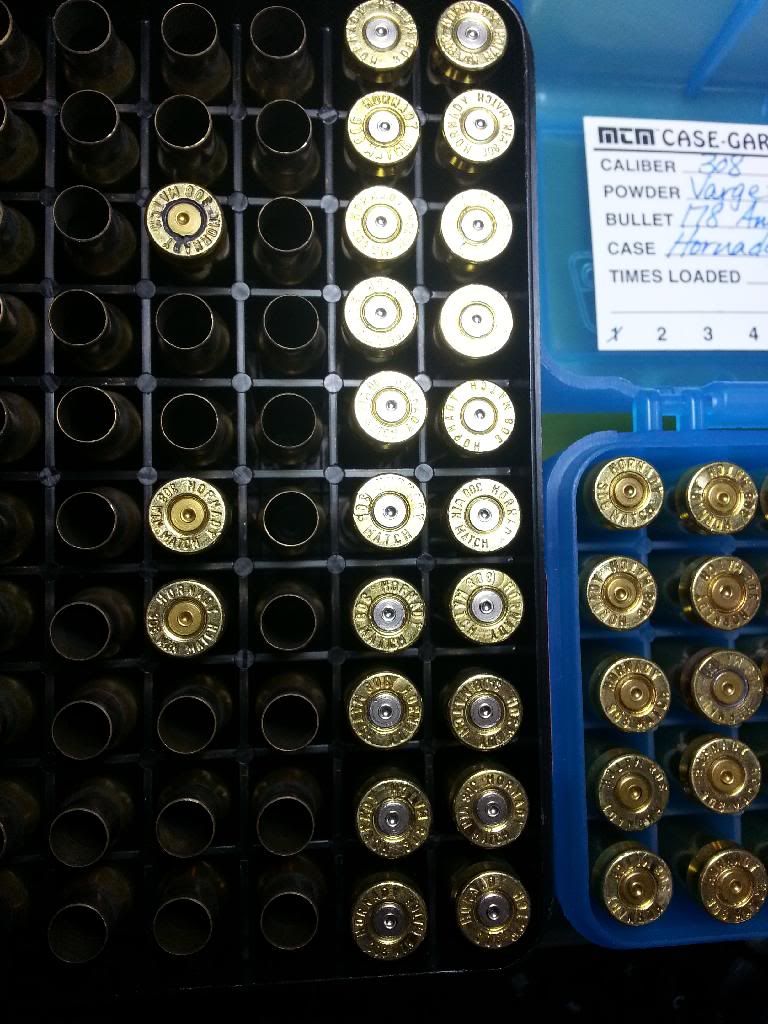Looks like another failed Winchester primer.
Been a rash of these over the last few years.
As to the ejector marks: You're over pressure for one reason or another. If it's a load you've shot a lot of and never had a problem with before, perhaps you've switched to a new powder lot, or a new bullet lot? Maybe the barrel is a bit fouled. It's been my experience that only highly overpressure ammo will consistently create an ejector mark on every shot. When you're just a bit over the edge, the marks will be intermittent as you're seeing.
Last thoughts: Wet/oily/lubricated chamber or ammo will cause pressure indicators much sooner. Be sure your chamber and ammo is clean and dry.
After further reading it seems that the WLRPs are known for failing at that area of the cup. I found multiple threads with pictures exactly like mine. I will be switching to federal primers as that's what I have a lot of.
I cannot speak for the bullet lots as Ive got a pretty good stockpile of them but have not checked lot numbers. When Ive measured them they've always been pretty consistent. On the powder I know Im in a different lot than what I developed the load on but Ive gone through a few lots since development and FPS has been within a couple of percent. Hodgdon powder in my experience has always been pretty consistent between lots. Ive shot about 400 rounds if this load through this gun with no problems until now.
The barrel probably is a bit fouled, if I was getting pressure signs on all of them I might could see that but I will clean it anyway. Ive been contemplating stripping the copper out and starting over as Ive only cleaned it with a nylon brush and carbon remover as I shoot suppressed quite a bit which obviously fouls the barrel much faster. Ive got some cheapo FMJs that I can shoot to get the copper back in the barrel before I chase down this load again.
I run my 175s to 2650 with the WLR primers and I've never had a primer leak. I've also pushed the WLR primer to fairly high pressures at 3010fps with the 155 scenar, and I never had any do this.
How many rounds did you have down your barrel when you did this test? If it was a brand new barrel, or within the first 100 rounds or so, you may want to re-evaluate the velocity. Barrels can pick up a significant amount of velocity after they are broken in. My barrel picked up a solid 100 fps after the first couple hundred rounds. I've heard of others picking up 50, and even up to 150. Just brainstorming here...since you have 600 rounds down the tube, this might not be the issue if you've tested velocity recently. Might just be a bad batch of WLR primers. Try bumping down the load by 3%, you should find a node somewhere in there, and load up 20 rounds or so and run them to see if any primer pierce. Also, run a string of like 5-6 rounds, then chamber one and let it sit in there for 30 seconds or so, see if it heats up and causes any issues. Loads that are near max, which I think 44 is close (someone else can chime in here to validate), can see pressure issues if the round gets warmed up in the chamber.
I also see cratering on the primer, which could be a pressure sign. How are your primer pockets holding up after shooting this load? Maybe someone with more experience could chime in.
Just my 0.2 cents, best of luck figuring this out!
At about 100 rounds this load did 2650, at 500ish rounds it does 2695ish so Id say the barrel is good and broken in by now. When I shoot a group I generally try not to screw around with the last shot or two so it cant cook in the chamber. The ones with ejector marks have no rhyme or reason, sometimes its the first, sometimes its the last, sometimes its 3-4 of the 5 even after letting the barrel completely cool down.
Hornady lists book max at 43.X so Im not much over it, but Hodgdons site says max is 45gr and in my experience the Hornady manual is VERY conservative and I tend to trust the powder manufacturer than the bullet manufacturer.
The most loads Ive gotten through is 4x with this load and the primer pockets are still nice and tight even with the small OD Winchester primers. The cratering happens even with well below max loads. I believe Ive just got one with a large firing pin hole. The fact that my primers still have a rounded edge to them, I have no case head separation problems, primer pockets still tight with a small OD primer after 4 firings and until now no ejector marks leads me to believe my load is safe. I know plenty of people running higher charges than I am in 5Rs with no problems but obviously that has to be taken with a grain of salt but my headspace measures within a thousandth of theirs so Id say we should be pretty close. I just see no point in running it harder, 2700fps with a 178 amax gets the job done just fine for what it is.
You exceeded Hornady's max load and blew a primer. This isn't Winchester's fault. Also, be aware that Hornady has two different 308 brass cases out there. They are 10 grains apart in weight and have different capacities. Weigh the blown case and compare it to a mild looking one.
See above for my thoughts on the powder charge and the primer problem.
I wish I would've known about the different lots of hornady brass a few months ago. I just figured that out a month or so ago as I was getting unexplained flyers that I figured had to have been me. I noticed that a lot of the once fired brass I have had different primers so I weighed them and sure enough my brass either weighs ~158gr or ~172gr with a fired primer in it.
Disagree that the picture indicates an overpressure condition. There is no sign of brass flow whatsoever.
As has been seen over and over again across the last several years, the Winchester primer failed on the corner radius. Affected primers will do this even at pressures well less than SAAMI maximum.
This is what I have found as well on the Winchester primers, it seems this is only with the LRPs and none of the others though.
Also take a look to see if there's any differences in neck thickness or length between the cases that showed pressure sign and the one's that didn't. You could have excess carbon buildup that's only causing problems with cases that are slightly thicker or longer in the neck.
All cases were trimmed to 2.004 prior to this firing so they all started at the same length, but I haven't gotten a neck turner yet. Its on my short list of items to buy for sure. I did notice a couple of them were harder to chamber than other but did not notice if those were the ones with ejector engraving. I believe even ones that were normal still had some engraving.
What I get out of the OP is a certain amount of dependence on data. "Well, the book says I'm safe, etc." I know, not exactly. But with extractor marks, cratering and blown primers, and relying on past performance, instead of current evidence; it's just possible we are not seeing the forest for the trees?
Yes, there has been a fair amount of chatter concerning defective Winchester primers but I don't see how it can cause extractor marks on the case? That almost always indicates excessive pressures.
If it was my gun, I would modify the load a bit and see if you still have "defective primers". BB
Again Ive fired over 400 rounds of this combo in the gun in weather from 15* to 100* and am just now having problems on a 65* day. It has been a safe combo, not to mention these thin primers still show a nice radius and there is no brass flow that would signal a high pressure load. As I said above the cratering happens on even well below max loads. Im not blaming the primers on the ejector marks at all, I believe that is a separate problem that after further research seems to be a flaw in WLRPs.
As it stands now Im going to look through my powder stash and find which lot I have the most powder of and use that to load some more with federal primers and back the load down half a grain or so and work back up. Im debating on whether to strip the barrel or simply clean the carbon out as Id like to do whatever cleaning I can at the house before hitting the range. Then I could run 20 or so FMJs through it make sure the barrel is settled back down then run some more of the current loaded rounds and see if I get ejector marks again. If I do drop back to these others Im talking about loading. If I still get ejector marks then take it from there I guess.
The ONLY thing Ive changed since last time is put a different muzzle brake on and possibly jumped into another powder lot. I just figured that if the powder was a little hotter that it would be chewing up all my brass and not just intermittently.
